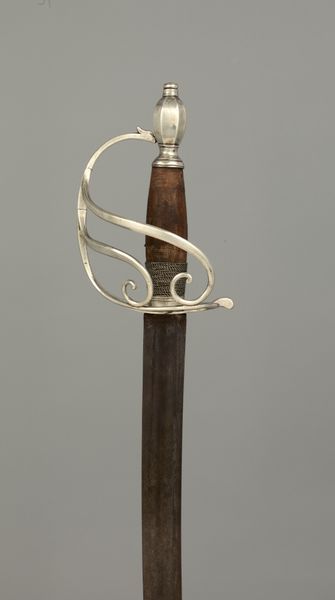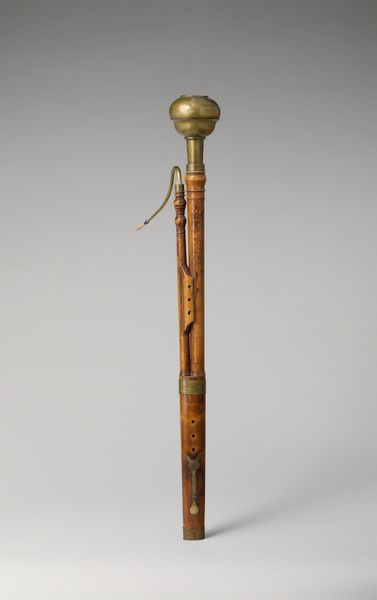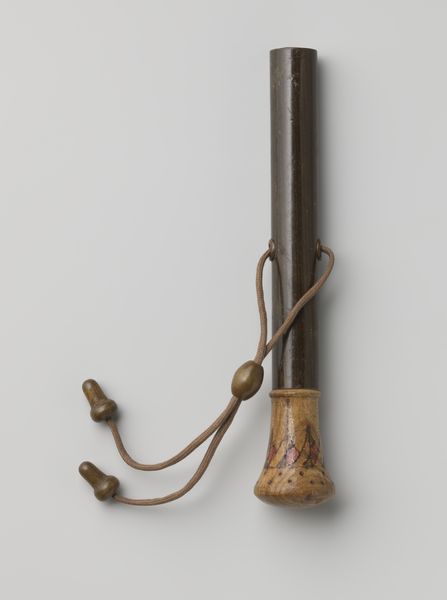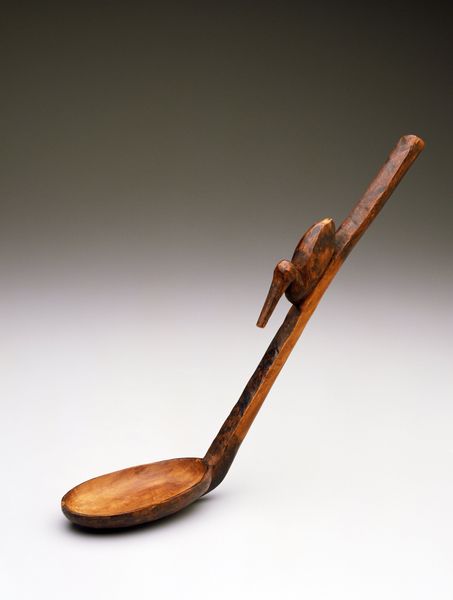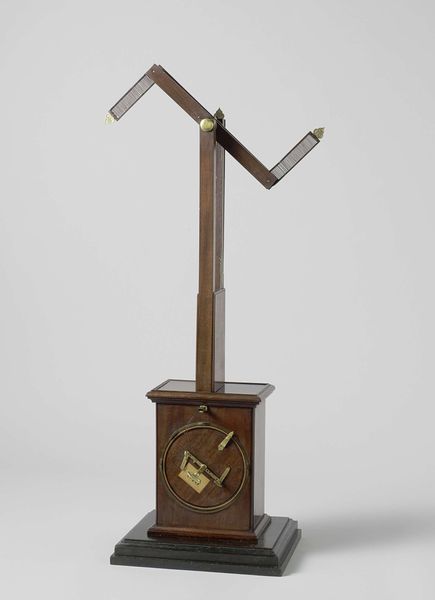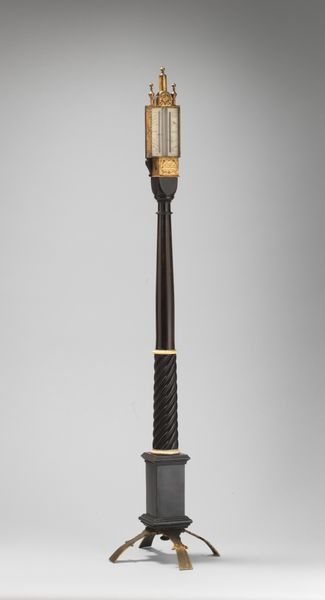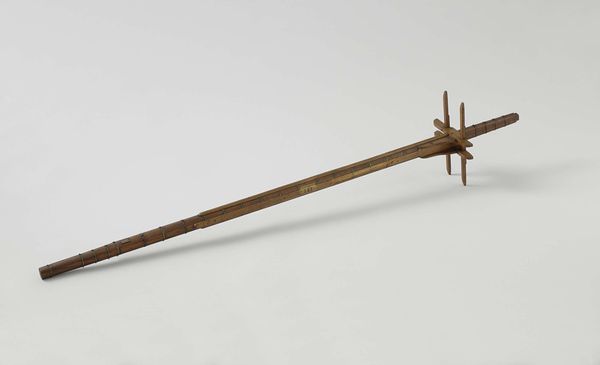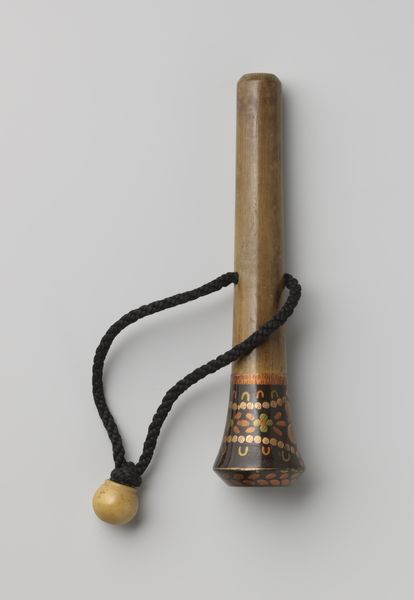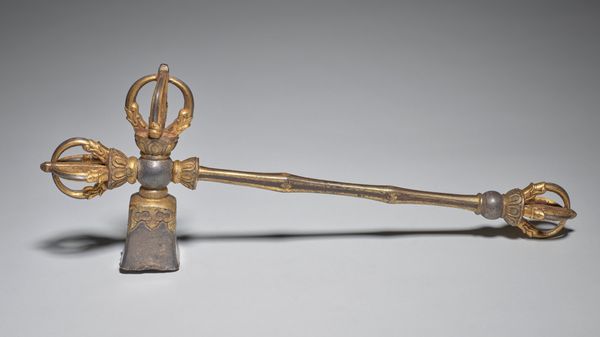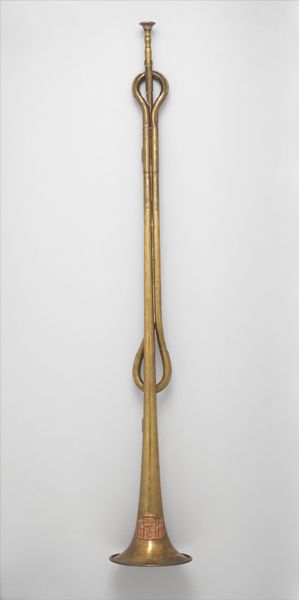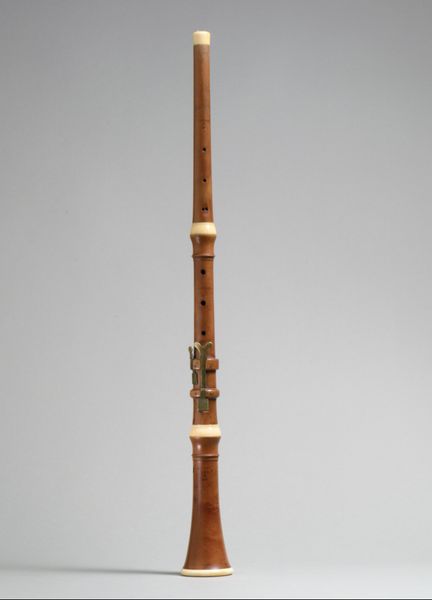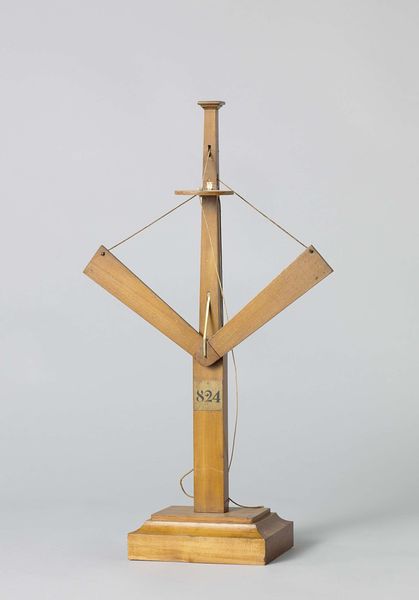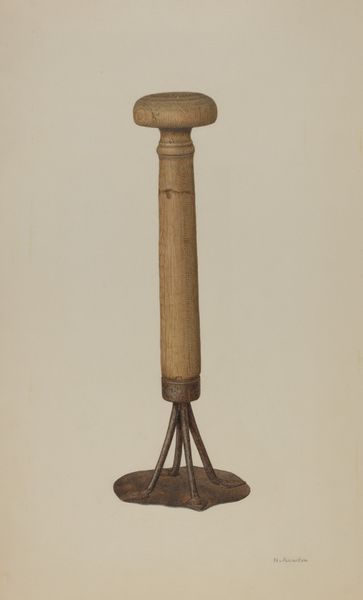
mixed-media, wood
#
mixed-media
#
asian-art
#
japan
#
men
#
china
#
wood
#
musical-instrument
Dimensions: H. 20 1/2 × W. 1 7/8 × D. 5 1/16 in. (52.1 × 4.8 × 12.8 cm) Length (Of bow): 21 15/16 in. (55.8 cm)
Copyright: Public Domain
Curator: Look at this striking Jinghu from the 19th century, a masterpiece now housed at the Metropolitan Museum of Art. Editor: It’s austere. Stripped down to essential forms, primarily verticals. Almost minimalist, but infused with that warm, woody tonality. What is it constructed of, exactly? Curator: It features mixed media with primarily bamboo and wood. A closer examination will tell you of its mixed parentage between the two prominent Asian cultures that used it prominently. Editor: Fascinating! And one notices the beautiful textures: the natural grain of the wood is celebrated. How was the reception for the visual impact? Was it appreciated, as much for its aesthetic appeal? Curator: Considering this object, we should acknowledge that it probably has appeared many times, played by the best members of Jingju societies in front of wealthy merchants and warlords, or to enthralled, but poor crowds in Beijing. To a cultural elite, the artistry and elegance may signify something. But for the lower classes, it's utility to signal a form of cultural performance probably wins out. Editor: The material also contributes, one suspects. I mean, the starkness with the bamboo feels so fundamental, really almost conceptual if we imagine ourselves outside it's function. Was there a deeper philosophy? It’s like the very essence of "instrument" distilled into simple forms. Curator: Well, perhaps a deeper history. Jinghu construction reflected more than mere craftsmanship; its shape, materials, and sound all interweaving China’s complex past. Every polished facet, choice of wood, spoke volumes about that time period. Editor: That all adds complexity. One starts to look closer. One cannot separate that simple presentation with that very involved history... So a Jinghu player then would know these implications and maybe the patrons did too? Curator: Undoubtedly! In that time, you could certainly argue a musical instrument's decoration wasn’t simply ornamentation—it's a sign of its cultural impact and value, which is more deeply layered than a purely decorative work Editor: This sheds light, if you'll pardon the expression. I thought at first that I would not be interested, as this might've just seemed like one very rudimentary instrument. But your telling brings out nuance that requires historical and societal insight. Curator: Precisely. By situating it, you see both its intrinsic beauty and the world that shaped it.
Comments
No comments
Be the first to comment and join the conversation on the ultimate creative platform.
